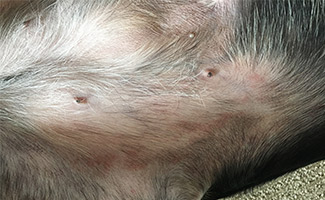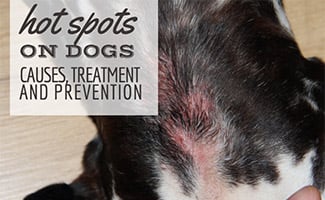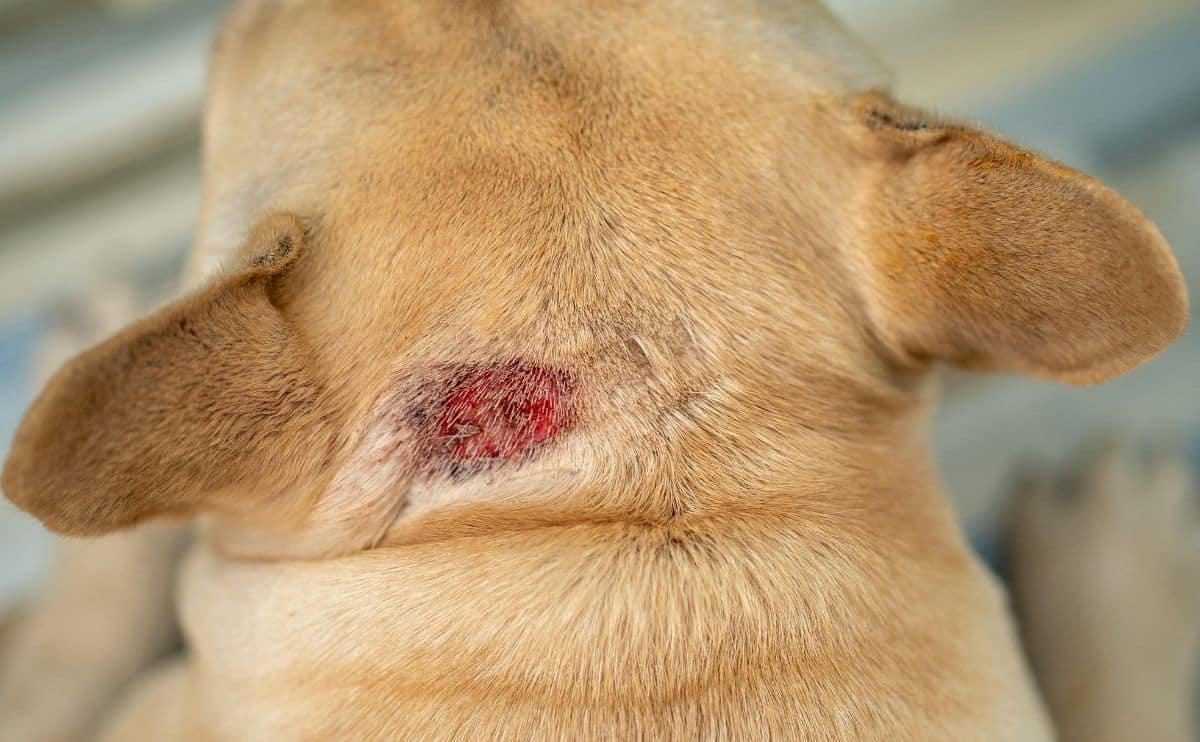Staph Infection In Dogs: What Are The Signs And Treatment Options?
When you purchase through links on our site, we may earn a commission. Here’s how it works.

Most of us know the term “staph infections” because humans can contract them fairly easily. But did you know that dogs are totally susceptible to staph infections, too?
Table of Contents
How do staph infections affect dogs? They’re mostly found on their skin, but not always. Staph infections can become a serious threat to your dog’s health, so it’s crucial to know how to spot the signs and when to go to your vet.
What Is A Staph Infection In Dogs?

Staph infections in dogs are caused by Staphylococcus bacteria, and in most cases, they appear as skin infections. Staphylococcus bacteria usually live on the skin of animals (and humans) without causing any problems. However, once the skin gets irritated or wounded, the bacteria can invade the skin tissues and multiply quickly, causing an infection. Staph infections are the most common bacterial skin infections seen in dogs. The bacteria can spread quickly and can cause painful skin lesions, among other symptoms. Weaknesses in a dog’s immune system can allow pathogens like this to get into the body and worsen into a bad infection.
Excessive growth of staphylococcal bacteria can also cause ear infections in dogs, but this article focuses on staph infections on a dog’s skin. Our article on ear infections in dogs can teach you about causes, symptoms, treatment, and more information.
How Do Dogs Get Staph Infections?
The most common causes of skin irritation in dogs are excessive scratching, licking, and chewing. But anything that causes a change in a dog’s healthy skin environment can create the ideal conditions for Staphylococcus to become a bacterial skin infection. This often includes dogs who have fleas or who have allergies to food or environmental factors.
Staph infections can occur in any breed or age, but older dogs are more susceptible due to a weaker immune system. Some dogs are also prone to stubborn, recurring staphylococcal bacteria skin infections that can develop antibiotic resistance — this is when it’s especially crucial for a vet to determine the underlying cause.
In younger dogs who have recurrent infections, common causes include external parasites and allergic skin disease. Older dogs can also develop recurrent infections from hypothyroidism or another underlying systemic disease.
Symptoms

There are several symptoms your dog may show if he’s suffering from a staph infection:
- Excessive scratching, licking, or chewing
- Red and inflamed skin
- Patchy fur loss with skin that’s moist, crusting, or peeling
- Pus-filled lesions on the skin
- Circular skin lesions that look like ringworm
- Pain
- Fever
- Weakness
Skin infections in dogs are very common, and they’re not always a staph infection. Hot spots can often develop from excessive licking, chewing, and scratching. But your veterinarian should see your dog if he’s showing these signs to determine the best diagnosis and treatment. If a staph infection is left untreated, it can lead to serious conditions like blood poisoning or even death.
Diagnosis
If your dog shows signs of a skin infection, you should see your veterinarian as soon as possible. Treating a dog’s early stage staph infection is better than waiting to see what happens. Your vet will want information about the onset and length of symptoms and may want to do skin tests to help determine the underlying cause of the problem. In some situations, they may require a skin biopsy to determine which antibiotic will work best to fight the infection. Dogs with allergic skin disease or other underlying medical conditions may develop secondary staph infections because of those diseases. A secondary staph infection can also occur if dogs are licking an open wound or infection.
Treatment
Treatment for staph infections typically involves oral antibiotics to prevent the infection from spreading to internal organs. If the infection is on your dog’s skin, your vet may also prescribe a topical antibiotic ointment. Dogs can develop antibiotic-resistant staph infections and may need stronger treatment or different medications to treat them.
Your vet will give you instructions on how to administer oral antibiotics, how to apply these medications, and how long to continue treatment. Some infections may require three to six weeks of treatment before it’s under control. But in some cases, antibacterial shampoos, sprays, and wipes can help your dog recover more quickly. You can ask your vet which ones she recommends. Many people look for a dog staph infection home remedy, but these must be treated by a doctor to prevent them from getting worse and becoming very dangerous.
 Our Personal Experience With Staph Infection In Dogs
Our Personal Experience With Staph Infection In Dogs
“Last winter, my dog’s skin became very red and itchy. I took her to the vet, who said she was having skin allergies that had led to a staph infection. She said the dry skin that was flaking off and a bump on her belly that looked like a zit were two signs that she had a staph infection. She put her on an antibiotic and steroid to clear it up. Our vet told us this was the number condition they see during the winter time.”
– Kimberly Alt, Canine Journal
Are Staph Infections Contagious?
Staph infections themselves aren’t contagious. However, the normal, harmless Staphylococcus bacteria living on our bodies can be spread from dog to dog and from humans to dogs.
What Does Staph Infection Look Like?
Watch this brief video to see how staph infections can look different from one dog to the next.
Are Allergies The Culprit?
If your dog has recurring skin infections or is just frequently itchy, allergies could be the reason. As we mentioned above, it’s important to consult your vet to properly diagnose any skin problems your dog is having. But you can also learn more about which foods and environmental factors could be causing your dog problems by giving him an at-home dog allergy test kit.




